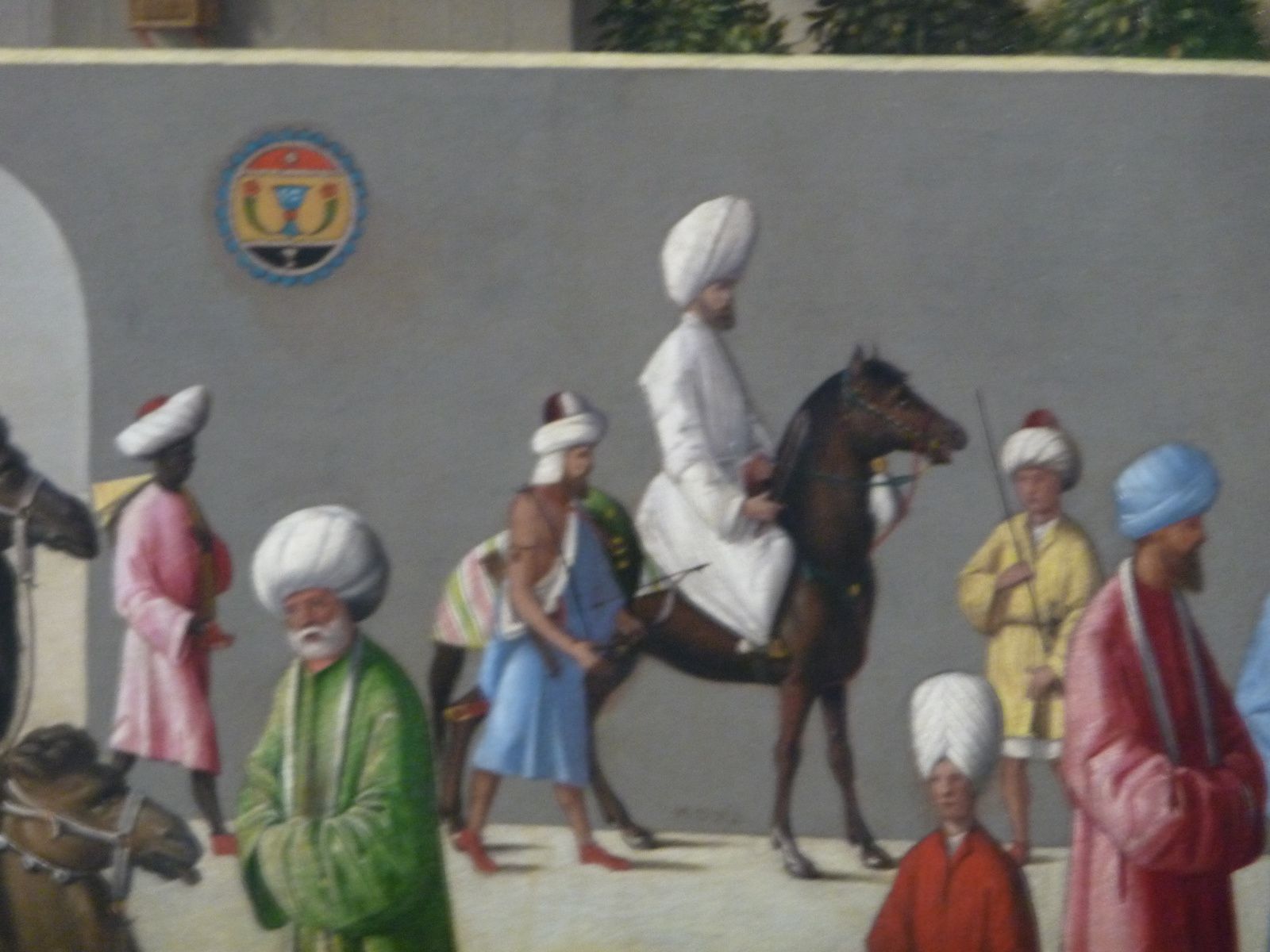Detail from 'The Reception of Ambassador Domenico Trevisiano at Damascus' painting by Gentille Bellini school, 1511
Also known as 'The Reception of Ambassador Domenico Trevisiano at Cairo'

Picture source: Sortie au Louvre-Lens
A Mamluk dignitary on horseback, accompanied by his servant, is stopped by a guard who lowers his baton.
Referenced on p37, The Mamluks - 1250-1517 by David Nicolle:
This detail from a remarkably accurate painting of The Reception of Venetian Ambassadors in Mamluk Damascus
by an anonymous artist of the 'school of Bellini', 1488-96, shows a horseman wearing the tall turban of a senior amir.
He is accompanied by an infantry archer, and rides past a building decorated with an example of Mamluk heraldry. (Louvre. Mus. inv. 1157, Paris)
[The headgear of the infantry archer may be a kallawta.]
In St. Mark preaching in Alexandria, for instance, it is possible to recognize the kallawta.
In origin it was a small, yellow cap without any turban wrapped around while the hairs were long and fell down loosely on the necks.
At the time of the sultan al-Ašraf Ḫalīl (1290-1293) its colour was changed from yellow to red and a turban was wrapped around it.
When al-Nāṣir Muḥammad ibn Qalāwūn (1293-1294, 1299-1309, 1310-41)
had his head completely shaved after he went on a pilgrimage in 1332 his entourage copied him and the loss of hair made the kallawta much bigger in size and of better quality.
Source: Gentile Bellini E l'Oriente by Maria Pia Pedani
Back to The reception of Ambassador Domenico Trevisiano at Damascus.
A Mamluk foot-soldier from Armies of the Middle Ages, Volume 2 by Ian Heath, based on 'The Reception of Ambassador Domenico Trevisiano at Damascus'.

